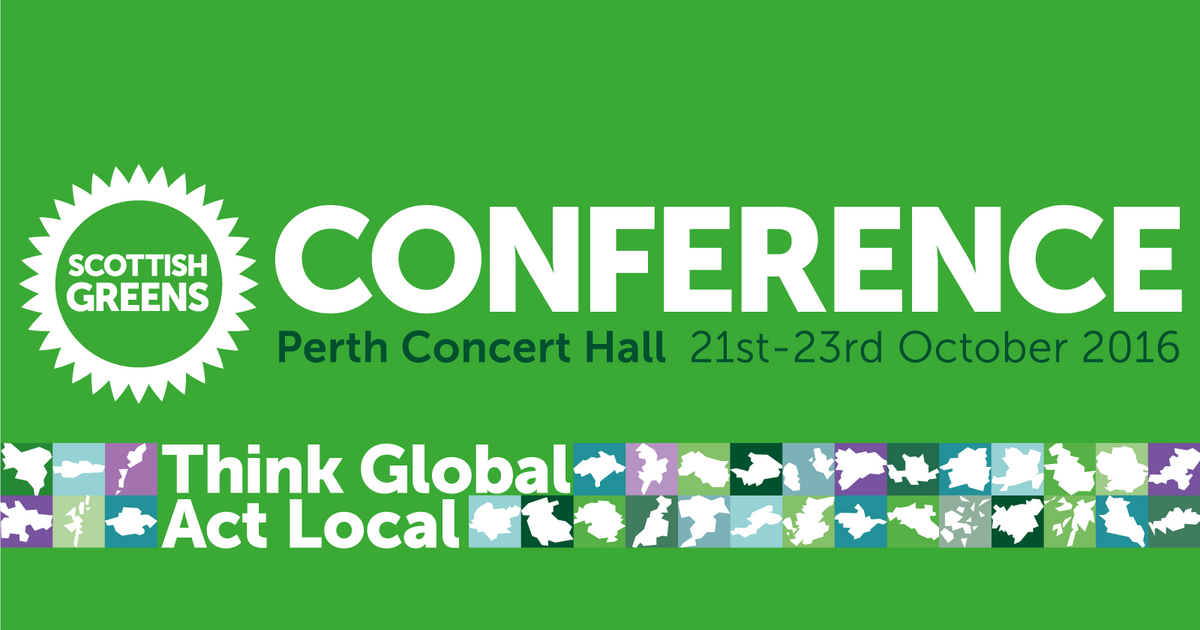Communities must have far greater control over their local affairs

The Scottish Green Party is holding its annual conference in Perth. It will be a rather different affair to the first one I attended 20 years ago when I addressed the conference in the lounge of an Aberfeldy Guest House.
With a surge in membership and enhanced political representation, we are particularly looking forward to the 2017 local elections and the opportunity to elect many more Green councillors across Scotland to help build sustainable communities and strengthen local democracy.
The state of local democracy is nothing to be very proud of. In a by-election in Glasgow last week, the turnout was 23 per cent. At the last local election in 2012, it was 39 per cent. The truly shocking aspect of this failing democracy is the lack of attention it has attracted. In Iceland, by contrast, as far back as election data has been collated, turnout has been between 82 and 88 per cent. In 2006 and 2010, it dropped below 80 percent and led to academic inquiries and much soul-searching. Across Europe it is well above 60 per cent and as high as 75 per cent in Italy.
Not only has turnout plummeted; local autonomy has also been compromised and undermined by the usurping of fiscal powers through the council tax freeze and, now, by proposed rate-capping. Councils raise only 12 per cent of their funds when the European norm is 50 per cent. The kind of autonomy that major European cities have is the envy of councils in Edinburgh, Glasgow and Dundee.
It is often forgotten that Scotland is one of the most centralised countries in Europe, with countries such as Germany and Italy having local councils serving populations of around 7-8,000 people with significant powers to raise local taxes for the kinds of services that local people want. The average population of a Scottish council is 166,000.
One of the core principles of the Scottish Green Party is a revitalised local democracy. We want all decisions that can be made at a local level to be made at a local level. During the referendum in 2014, the Yes campaign argued that decisions about Scotland are best made by the people who care most about Scotland - the people of Scotland. We think the same for decisions about Kilmarnock, Peebles, Montrose, Aberfeldy and Perth.
Back at the beginning of the Scottish Parliament in 1999, a report commissioned by Donald Dewar on local government claimed that “Scotland today simply does not have a system of local government in the sense in which many other countries still do”. Seventeen years later, nothing has changed.
Scottish Greens don’t want to wait any longer. We want to be able to go into the local elections in 2017 with proposals that allow local communities to take far greater control over their local affairs.
We want local people to be able to plan where new housing and amenities should go, to decide how much tax to raise to pay for libraries, swimming pools and care services and to take action to tackle urban blight, establish community energy companies or invest in new public transport services.
The Commission on Strengthening Local Democracy in Scotland published a groundbreaking report on the way forward in August 2014 but its recommendations have yet to be enacted.
During this fifth session of the Scottish Parliament, it is vital that we deepen and strengthen local democracy. Local councils are a vital part of how we are governed and meaningful local control has been undermined and sidelined for too long.
It is time for Holyrood to be bolder and to usher in a new age of local democracy to give power back to the people.
With the Scottish Government unwilling to undertake reform of local taxation and with the emphasis on community empowerment (voluntary and partial) rather than local governance (statutory and universal), there is a crucial debate to be had about the shape and form of local power structures.
Greens have played, and will continue to play, a key role in that debate.
This article first appeared in the Herald
